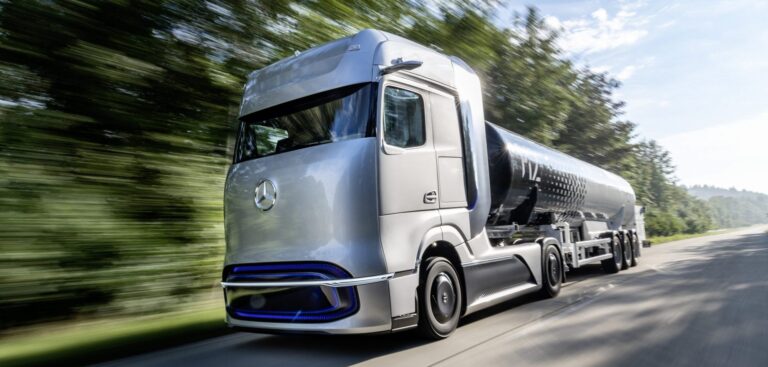Gas supplier Linde and Daimler Truck have signed an agreement to jointly develop a new liquid-hydrogen refueling technology for fuel cell-powered trucks.
Together, the companies will focus on a new process for handling liquid hydrogen (known as subcooled liquid hydrogen, or sLH2 ). They hope to develop a system which allows for higher storage density, greater range, faster refueling and superior energy efficiency.
The new process will apparently use higher than ambient pressure levels and a temperature control strategy which avoids so-called boil-off effects and “return gas” (gas from the vehicle’s tank returning to the filling station) during refueling, while not requiring complex data communication between the filling station and the truck. The companies note that the improved energy storage density is due to the higher than ambient pressure level which increases the hydrogen mass in the tank.
They are planning for the first refueling of a prototype vehicle at a pilot station in Germany in 2023. Both Linde and Daimler Truck state they will provide a high level of transparency and openness around the relevant interfaces of the jointly developed technologies. By enabling as many other companies as possible to develop their own refueling and vehicle technologies that apply the new liquid-hydrogen standard, they hope for a global mass market to be established.
Sven Ennerst, member of the board of management at Daimler Truck responsible for development, procurement and the China region, commented, “We at Daimler Truck are pursuing the vision of the CO2 -neutral transportation of the future. The hydrogen-based fuel cell is a key technology of strategic importance in this context. With our collaboration with Linde as an expert in hydrogen refueling technology, we want to increase the viability and acceptance in the industry of fuel cell trucks on the basis of hydrogen. The new process can further enhance the numerous advantages that liquid hydrogen offers.”
Daimler Truck states that it prefers to use liquid hydrogen because in this state, the energy carrier has a far higher energy density in relation to volume than gaseous hydrogen. As a result, the tanks of a fuel cell truck using liquid hydrogen are much smaller and, due to the lower pressure, significantly lighter. This gives trucks more cargo space and a higher payload, while at the same time, more hydrogen can be carried, which significantly increases the trucks’ range.
Daimler Truck says it is also pressing ahead with the development of the necessary tank-system technologies to make liquid hydrogen viable in mobile applications as an energy source for its series-produced fuel cell trucks. The storage of cryogenic liquid hydrogen at minus 253°C is already common practice in stationary applications across other industries.


